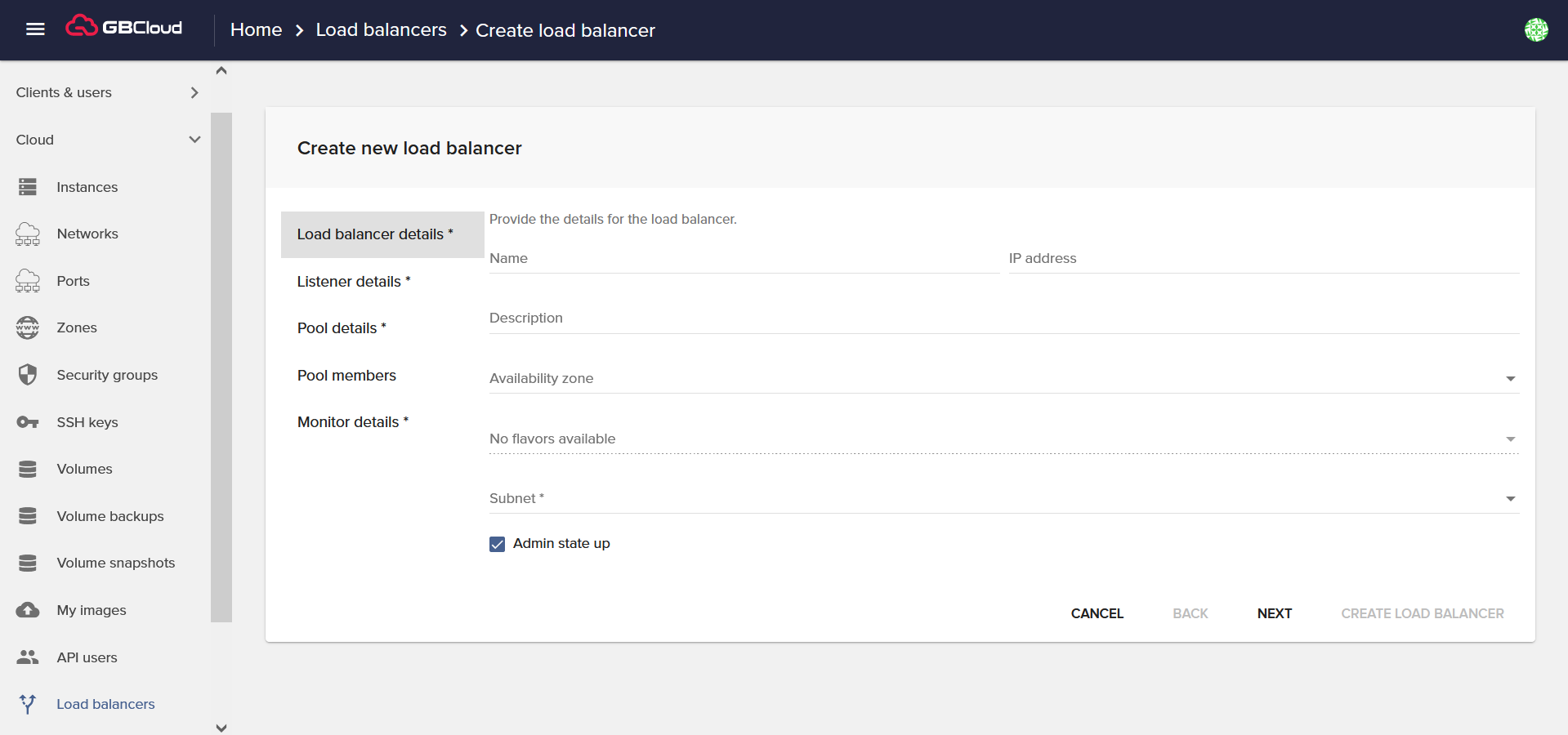What you’ll get
Running your websites and applications during peak traffic hours might be difficult. If not properly handled, Quick outbursts in online traffic ang might cause disrupting outages for your users, potentially resulting in revenue loss.
GB Cloud Load Balancers, which are based on the OpenStack project, offer optimal application and content delivery by distributing workloads over multiple computing resources and instances. Scale your applications fast and easily from your dashboard with automatic or on-demand scaling to eliminate downtime.

Point-and-Click High Availability

Distribute Any Load

Build-in Health monitoring
Easy to deploy

Customizable Traffic Management
User able to customizes the load splitting method that suits for them.
-
Least Connection
The server with the fewest active connections to clients receives a new request. To determine which server has the fewest connections, the relative computing capacity of each server is taken into account.
-
Round Robin
Users can divide their tasks based on which machine is available next. The requests are distributed progressively throughout the set of servers.
-
Source IP
Users are allowed to return to the same server each time depending on the load balancer's knowledge of their origin. The client's IP address is used to decide which server will receive the request.


Variety SSL Encryption Options Available
User can choose from a variety of different SSL encryption options.
-
HTTPS
An HTTPS listener can be used to outsource encryption and decryption work to a user load balancer, allowing user applications to focus on their business logic.
-
HTTP
The server name of an HTTP listener is the name that appears in the URLs that the server delivers to the client as part of a redirect. This characteristic only affects URLs generated by the server; it has no effect on URLs for directories and files kept on the server.
-
TCP
TCP load balancing ensures a steady delivery of packets to IP addresses, which would otherwise be lost or corrupted. It ensures the data arrives error-free to non-HTTP applications.
-
UDP
User can use Load Balancer to deploy services that use the UDP protocol, such as Video Chat and IoT, and gain benefit from its low latency, scale, and reliability
Ability to Perform Server Health Monitoring
No need to concerned of sending traffic to bad server.
-
Choose Variety Type of Health Monitoring
Specifies the monitor type to perform health checks. The monitor periodically checks the health of instances associated with the load balancer every interval seconds. You can select HTTP, HTPPS, Ping, SCTP, TCP, TLS-HELLO, and UDP-CONNECT.
-
Maintain the Health Server
The load balancer service in OpenStack can be set to perform health checks, preventing traffic from reaching unhealthy or unresponsive servers.

Take advantage of our expertise! GB CLOUD is OpenStack Certified!

Our cloud services contain OpenStack Software that has been validated through testing to provide API compitability for OpenStack core services.
Ready to get started?
Let’s start off with creating account. Or would like to see more our Cloud Plans?
